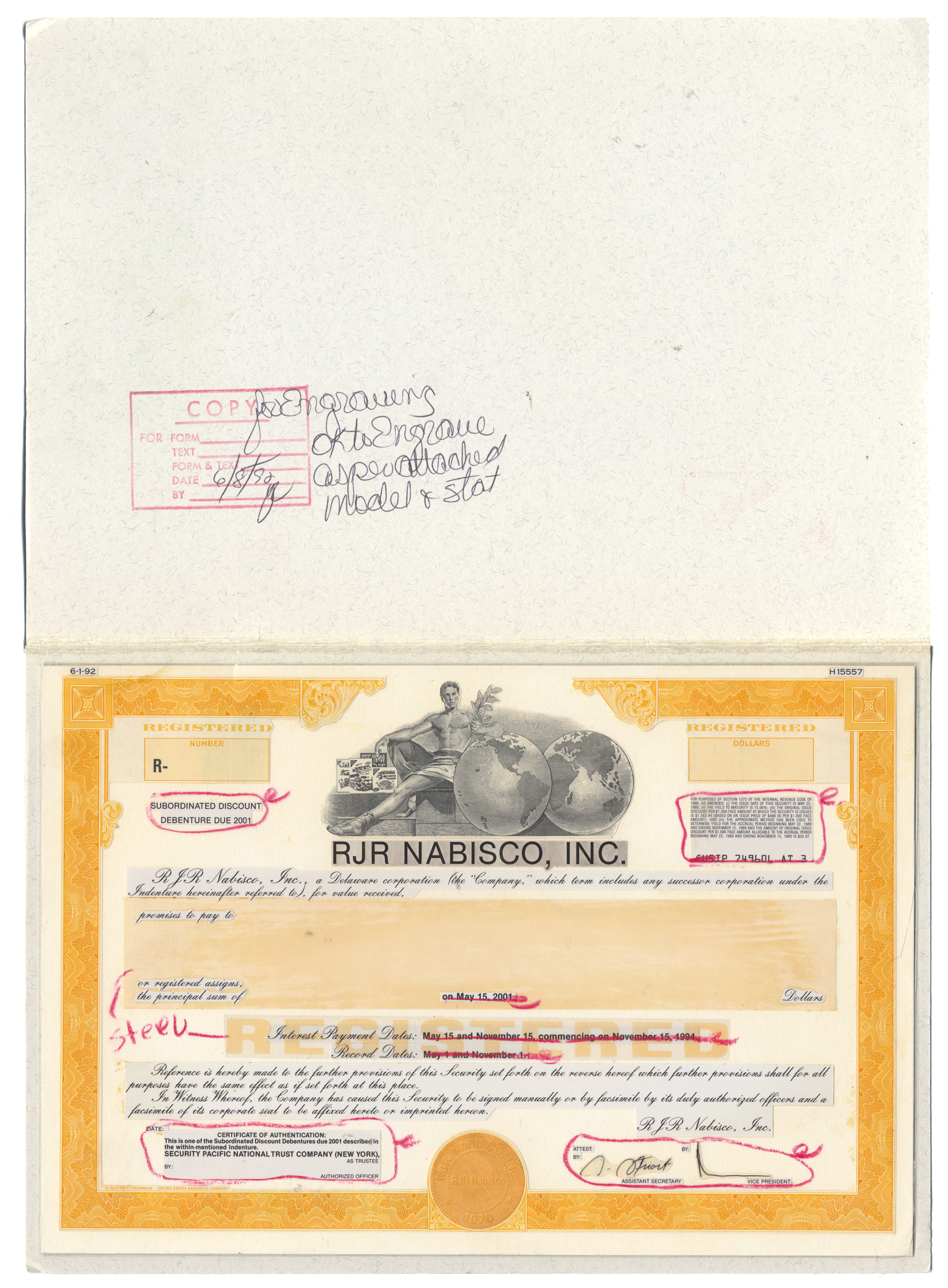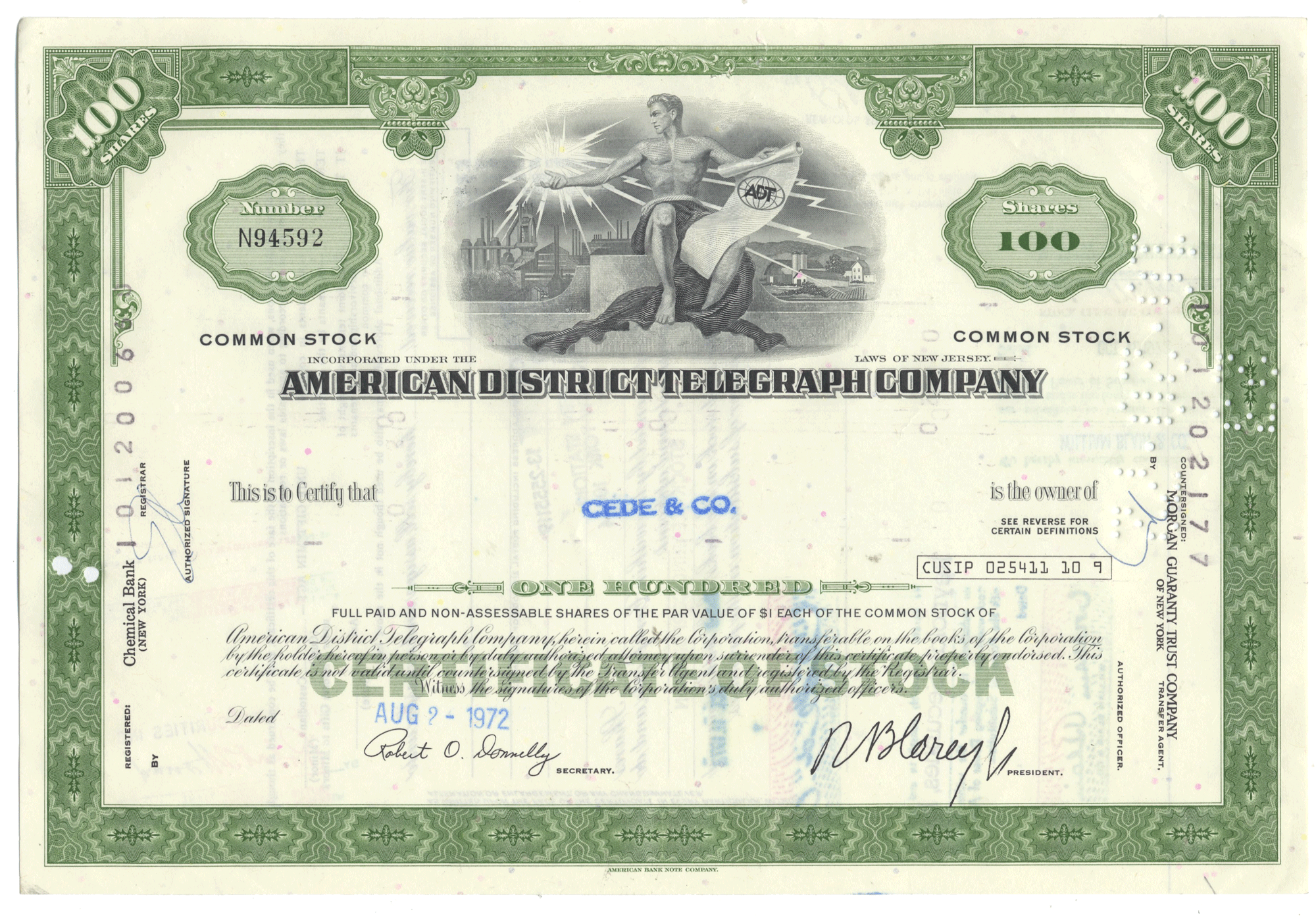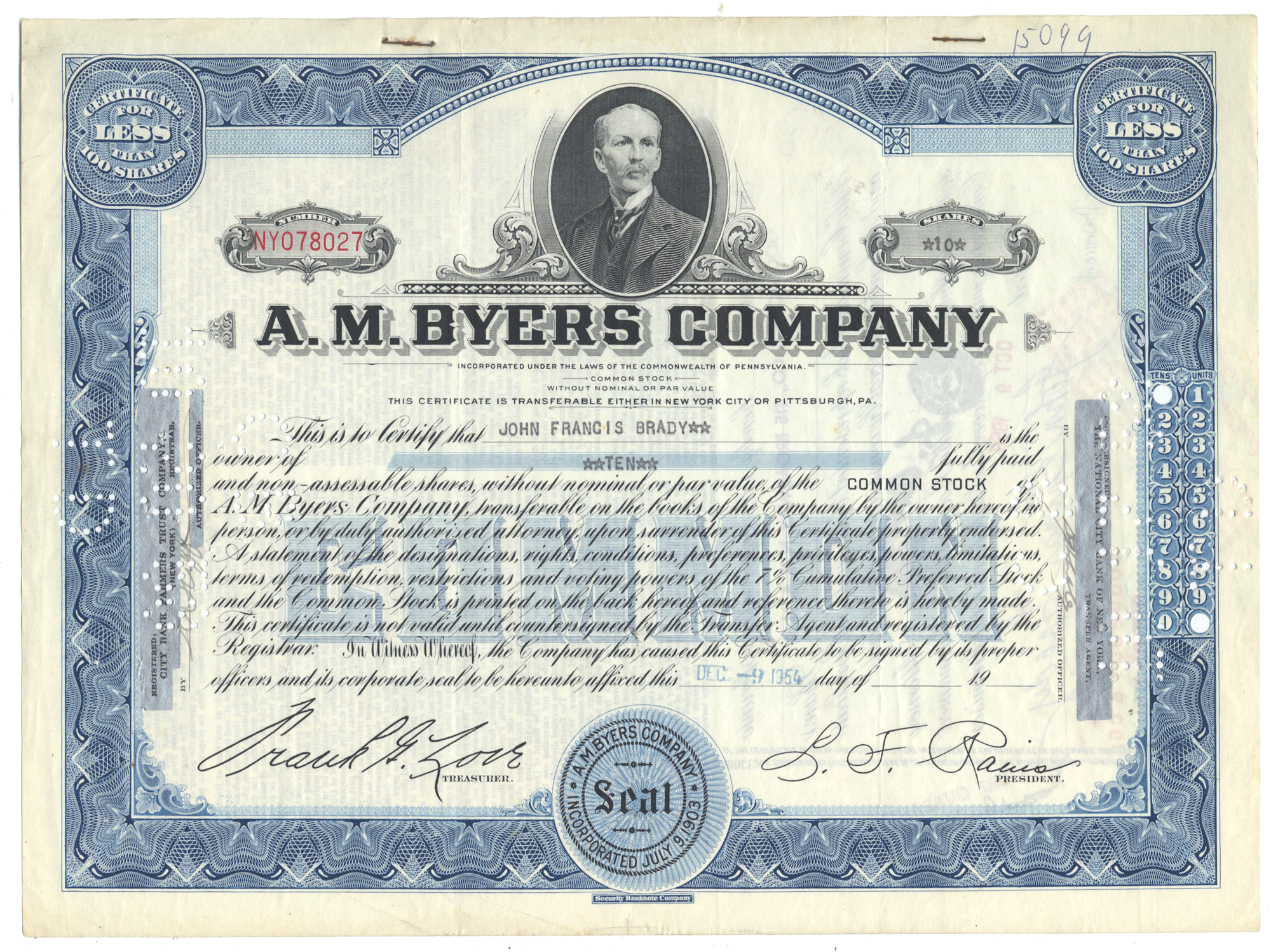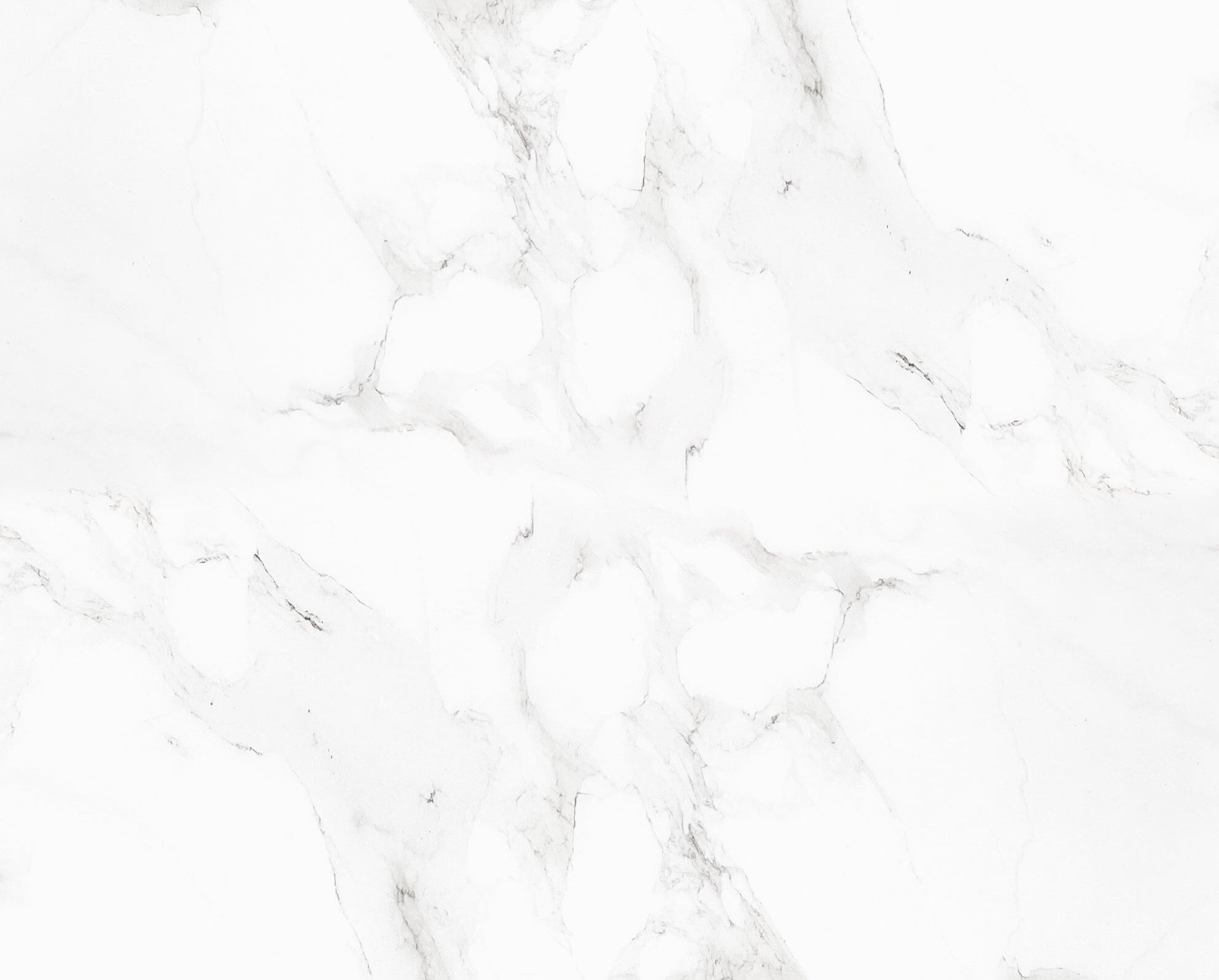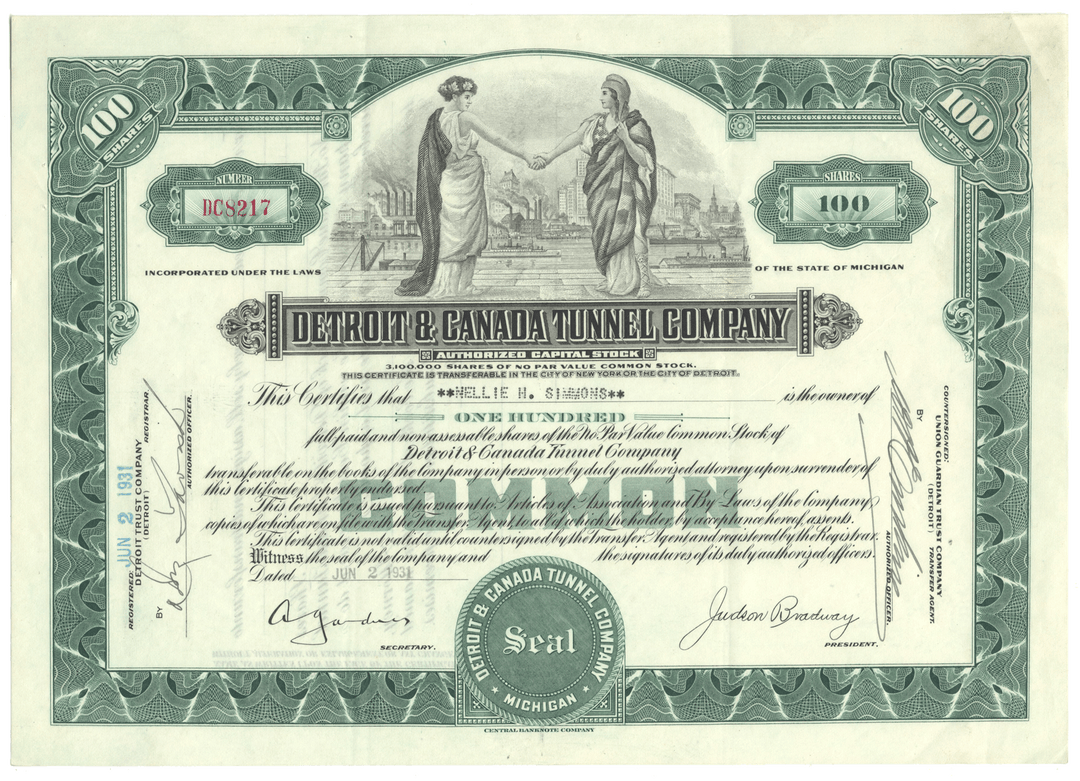
Detroit & Canada Tunnel Company
- Guaranteed authentic document
- Orders over $50 ship FREE to U. S. addresses
Product Details
Company
Detroit & Canada Tunnel Company
Certificate Type
Common Stock
Date Issued
June 2, 1931
Canceled
No
Printer
Central Banknote Company
Signatures
Machine printed
Approximate Size
11 3/4" (w) by 8 1/4" (h)
Images
Show the exact certificate you will receive
Guaranteed Authentic
Yes
Additional Details
NA
Historical Context
The Detroit & Canada Tunnel Company was incorporated on August 25, 1927, under the laws of Michigan, for the general purpose of building, owning, and operating (in conjunction with its wholly owned subsidiary, the Detroit & Windsor Subway Company, a Canadian corporation), a vehicular tunnel or subway underneath the Detroit River between Detroit, Michigan, and Windsor, Ontario, Canada. This tunnel became known as the Detroit-Windsor Tunnel.
The Detroit–Windsor Tunnel was built by the firm Parsons, Klapp, Brinckerhoff and Douglas (the same firm that built the Holland Tunnel). The executive engineer was Burnside A. Value, the engineer of design was Norwegian-American engineer Søren Anton Thoresen, while fellow Norwegian-American Ole Singstad consulted, and designed the ventilation.
The method used to construct the tunnel was immersed tube (sections of steel tube floated into place and sunk into a trench dug in the river bottom), as was done in the earlier Posey Tube. The tunnel sections have three main levels. The bottom level brings in fresh air under pressure, which is forced into the mid level, where the traffic lanes are located, and the third level is where the engine exhaust is forced into and vented at each end of the tunnel. Total cost of construction was approximately $25 million (around $292 million in 2016 dollars).
The river section of the tunnel was connected to bored tunnels on both banks. The tubes were then covered over in the trench by 4 to 20 feet of mud. Because the tunnel essentially sits on the river bottom, there is a wide no-anchor zone enforced on river traffic.
The tunnel is 120 feet short of a mile at 5,160 feet. At its lowest point, the two-lane roadway is 75 feet below the river surface.
Completion in 1930
The Detroit–Windsor Tunnel was completed in 1930. It was the third underwater vehicular tunnel constructed in the United States, following the Holland Tunnel, between Jersey City, New Jersey, and downtown Manhattan, New York, and the Posey Tube, between Oakland and Alameda, California.
Its creation followed the opening of cross-border rail freight tunnels including the St. Clair Tunnel between Port Huron, Michigan, and Sarnia, Ontario, in 1891 and the Michigan Central Railroad Tunnel between Detroit and Windsor in 1910.
The cities of Detroit and Windsor hold the distinction of jointly creating both the second and third underground tunnels between two nations in the world. The Detroit–Windsor Tunnel is the world's third underground tunnel between two nations, and the first international underground vehicle tunnel. The Michigan Central Railroad Tunnel, also under the Detroit River, was the second tunnel between two nations. The St. Clair Tunnel, between Port Huron, Michigan, and Sarnia, Ontario, under the St. Clair River, was the first.
Related Collections
Additional Information
Certificates carry no value on any of today's financial indexes and no transfer of ownership is implied. All items offered are collectible in nature only. So, you can frame them, but you can't cash them in!
All of our pieces are original - we do not sell reproductions. If you ever find out that one of our pieces is not authentic, you may return it for a full refund of the purchase price and any associated shipping charges.


